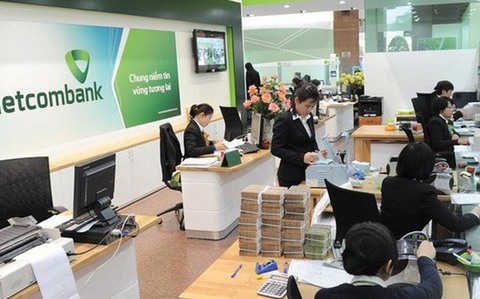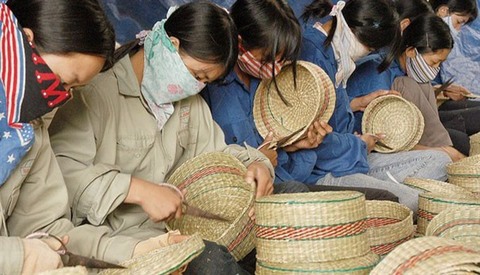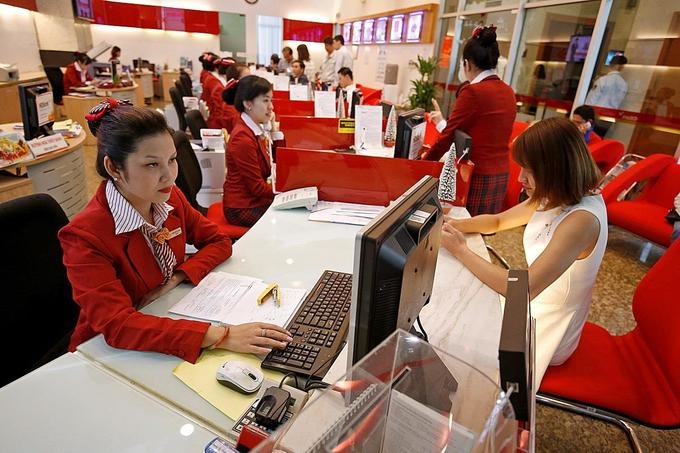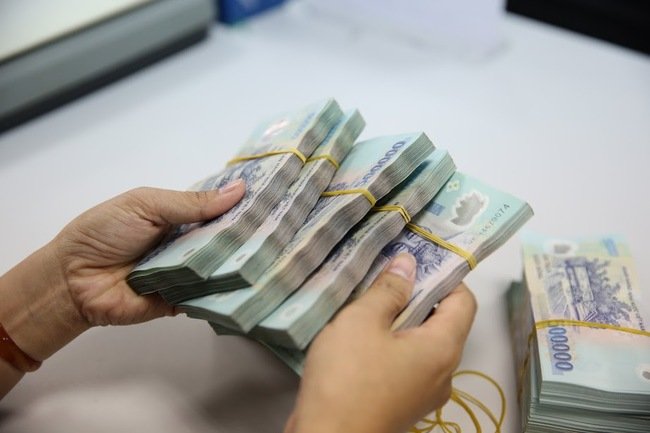Interest rates under the pressure of GDP growth
Interest rates under the pressure of GDP growth
Banks, enterprises and depositors are all concerned about what will become of deposit and lending interest rates.
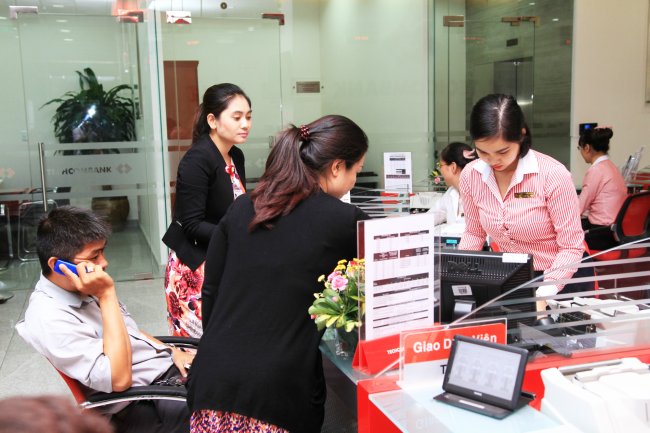
As the first quarter is nearing an end, the State Bank of Vietnam (SBV) has bought a volume of foreign exchange worth billions of U.S. dollars, equal to the total sum of last year, an unprecedented record in a three-month period. The volume of Vietnam dong pumped into the market to buy the greenback since early this year has surpassed the VND100 trillion mark, which forces the central bank to re-open the treasury bill channel to withdraw money. On the Interbank market, overnight interest rate of the dong and other rates applicable to short terms have gone down compared with earlier this year with the overnight rate removed from the annual 4%-5% peak that has been established for months. This rate is ranging between 3.1% and 3.2% per year.
Widening savings rates
Commenting on the real estate market, Nguyen Hoang Minh, vice director of the SBV HCMC Branch, says in recent months, loans extended to realty developers have apparently been slower, which may means estate supplies are going to shrink. Minh says estate firms in HCMC no longer have as many as realty projects as they used. In addition, more stringent ownership transfer procedures which take more time to complete is to a certain extent dampening the estate market.
Although banks have tightened their credit for estate developers and traders, they are still take it easy for individual homeowners. Credit for livelihood, mainly used to own houses to live in, of the entire banking system has amounted to VND1.41 quadrillion, accounting for over 19.5% of the total outstanding debt. It is understandable why banks have favored individual home ownership as this segment is safer than credit for estate developers.
From this standpoint, when banks’ output is focused on individual customers because of higher lending rates, it is more likely that credit institutions will keep their deposit interest rates at the current rates to sustain their capital mobilizing pace. Deposit rates will therefore not be likely to fall.
Bankers say it is not easy for interest rates to drop due to not only difficulties in output but also competition among themselves. Some banks which are still grappled with a high rate of real bad debt and whose credit mostly serves a limited clientele need to have stable input of capital mobilization to ensure their liquidity. They would not therefore cut their deposit rates. The above situation makes the gap of deposits of the same term offered by different banks ever larger. One bank offers an annual 6.5% rate for six-month deposits while another gives a 8% rate. The 1.5% margin is way too big. So, capital will be drawn to banks offering higher rates.
In order not to fall behind in the race for capital mobilization, a host of banks have had to raise their deposit rates. This means interest rates will not go down in the short term.
Possible scenario of a lower rate
Last year, credit growth was merely shy of 14% while public investment failed to disburse all its allocation. However, gross domestic product (GDP) growth soared to 7.08% due to the inflow of foreign direct investment (FDI). This year’s foreign investment sector’s growth, viewed from statistics released by the General Statistics Office, would not be as high as last year. Specifically, the key manufacturing industry, electronics, posted a growth rate of only 5.2% versus 38.3% in the same period last year. Cell phone production fell by 7.6%. This fall was expected as Samsung changed its plan to reduce production in Vietnam. However, other industries—such as mining, motorized vehicle production and textile and garments have sustained a relatively high growth rate. The only exception is agricultural production and agricultural export which generated a slower-than-expected rate.
The GDP rate of the first quarter is projected by the Ministry of Planning and Investment at 6.5%, a rise way below assumption of both the Government and the business circle.
Being dragged by low productivity, a wish to fuel GDP growth would have to resort to the classic method of money supply increase. However, two “spearheads” being bank credit and public investment are inching ahead. By mid-March, the credit growth of the whole banking system had risen over 1% compared with late last year. In early March, Deputy Prime Minister Vuong Dinh Hue sent an instruction to relevant agencies and local governments to ask them to accelerate implementation and settlement of their public investment plans in 2019 in the context that disbursement in the first two months moved at a snail’s pace.It is necessary to cut lending rates if credit is to be pumped to the five priority sectors. As the central bank has proved to be faithful to its schemes for controlled inflation and stable exchange rate, it is coping with tremendous pressure in the task of cutting down interest rates in dong to spur GDP. If credit growth continues to be low and GDP growth makes no significant improvement, both deposit and lending rates will fall in the second quarter. The central bank has in its hand tools for cutting interest rates as it wishes them to be.
The central bank has recently sought feedback about the draft content of a new decree, according to which banks that own government bonds issued by Vietnam Asset Management Company (VAMC) will no longer be allowed to pay dividend in cash. If the decree is passed, it will be effective to all banks regardless of their categories of ownership—whether they are State-owned, semi State-owned or private. Whether the Ministry of Finance approves it remains a question because the passage of the decree would mean that Vietinbank, BIDV and Agribank which all are holding VAMC bonds will not be able to pay dividend in cash. These banks’ dividend in cash amounting to trillions of dong every year goes to the coffer of the State which is their shareholder.
The above three banks and even Vietcombank will no longer generous with their loans if the ratio of their equity remains as low as currently. These “big four” are accounting for more than a half of the total loan outstanding balance, at some VND4 quadrillion dong out of the total debit balance of VND7.5 quadrillion. If the central bank is to interfere to cut down interest rates to foster GDP growth, the Ministry of Finance would have to give a green light to dividend payment in cash made by the “big four.”




